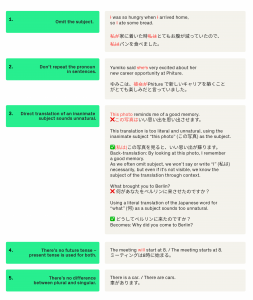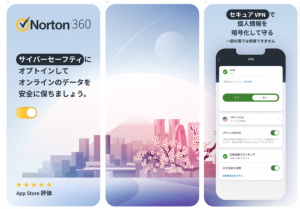
Breathtaking scenery, world-famous cuisine, and cutting-edge technology. Naming just a few of its reputable qualities, it’s easy to understand why Japan is recognized and admired on a global scale. In the business world, its presence is equally as impressive, owning the third-largest consumer market and offering more lucrative business opportunities for companies internationally.
However, this reward doesn’t come without risk. The intricacies of Japan’s culture, language, and etiquette pose greater challenges than in Western markets and these cannot be overcome with simple translation tools. Get it wrong, and you risk launching ineffective, costly content that has the potential to alienate people from your brand.
Through conversation with our Localization Manager, Miyuu Harada, we can start to understand more about why and how we can localize content for a market as complex and layered as Japan. Miyuu comes from Sapporo on Japan’s northern island, Hokkaido, and moved to Berlin five years ago. With a background as a freelance Japanese translator, she now manages localization at Phiture for over 40 markets, ensuring flawless Japanese localization and driving results for many of our key clients. Together with the Localization team at Phiture, Miyuu delivers expert consultation to our clients, coordinating a vast network of external collaborators to produce culturally and linguistically striking content for apps on a global scale.
Why do we localize?
On the surface, there’s the more obvious explanation to why we localize: users prefer to read content in their native language — and this is even more the case in Japan. “It brings more comfort to the user experience,” Miyuu notes, “and allows us to understand the brand or product as intended, increasing visibility, and ultimately resulting in more downloads or conversions.”
For the Japanese market, this step in product development is essential for brands looking to break through. “It’s vital to remove the language barrier,” Miyuu says. “Even though English is seen as the universal language, in Japan not everyone has the same language ability or skills in general, so when content is translated into Japanese, we feel very connected to the brand and it can build a greater sense of trust.”
Translation vs. transcreation
“The first thing to understand,” Miyuu says, “is that localization is not just translation — a common misconception.” Translators, or transcreators, use their creativity and knowledge of the market and language to reshape the source text and make it more appealing in the local language, instead of word-by-word translation. “Curating culturally and linguistically accurate content can make or break how a product or brand will perform in select markets.”
Translation – expressing words or text in another language.
Transcreation – bringing together language, culture, and emotion to create content that resonates with its target locale.
Of course, grammatically accurate translation is one key component for localization, but an equally important aspect is the adaptation of a brand’s products and services specifically to the individual target market. Everything from images and colors in visual assets, right down to CTAs and audio clips needs to be carefully considered and adapted according to market trends and local preferences.
Know the writing system
Every market has different writing styles and may interpret messaging differently; therefore, the rules are different when approaching certain content that may be sensitive. Some messages or phrases that work in English simply may not work in Japanese. As an extremely layered language with different formalities, there are certain rules that don’t apply to English in the same way.
For example, there are a lot of colloquialisms and slang used in English that Japanese doesn’t follow and can’t be translated directly when talking to a user or customer. Japanese slang is created through a more complex process, sometimes using a combination of both Japanese and English alphabets, for example, the transcreation of ‘LOL’ or ‘laugh out loud’ (笑). Like slang in most other languages, it’s used more frequently by younger generations and can be very effective when targeting social media platforms.
Japanese is also not derived from Latin like English, so there can’t always be a direct translation for some words or phrases. Inaccuracies like this are called honyaku-cho (翻訳調), or translationese.
Translationese – Awkward or ungrammatical translation, often due to an overly literal translation of idioms or syntax in the original language.
Despite being one of the most complex languages to master, the importance of accuracy and attention to detail in Japanese localization is paramount to success in the market. “A good Japanese transcreator,” Miyuu comments, “will be able to deliver grammatically precise content that sounds natural.” This means they will need to be either at native or near-native level to deliver the highest quality. Near native language skills will usually require the linguist to have lived in the country for the majority of their life. Unlike other markets, for Japan, the precision and accuracy of content can determine whether the product or service will be reliable and of good quality.
“If there’s even one error then this will be picked out straight away and will divert the reader, so everything needs to be perfect to avoid creating a negative association with the brand.”
As a non-native, Japanese can be one of the most difficult languages to achieve fluency and grammatical perfection in. “Some of the main difficulties,” Miyuu notes, “is that we have our own grammar rules, and we use three different alphabets.” Katakana, Hiragana, and Kanji combine to make over 50,000 characters, with about 3,000 still commonly used in Japan today. Additionally, unlike Germanic languages, Japanese doesn’t use any spaces, cases, grammatical genders, or articles.
Breaking down the differences

Characters and formation can change completely depending on who’s reading. If the tone of the content is formal or less formal, then different characters will be used to convey the message. For example, there are multiple pronouns to say ‘I’ (more than 10 in total). Here are some of the more commonly used:
Watashi (私 / わたし) – The most frequently used and modest pronoun, also used on formal occasions.
Uchi (うち) – Used by women on informal occasions.
Ore (俺 / おれ) – Used by men on informal occasions.
Washi (わし/儂) – Used by old men or older male characters in games or anime.
More rigid rules for pronouns add yet another dimension to localization. Including these details are crucial steps for brands and determine whether they address their audience appropriately or not.
How you choose to target keywords for the Japanese market will also need to be carefully researched and applied. The Hiragana alphabet can have a much higher search popularity than expected, as it’s used for typing characters that produce automated suggestions in the correct form in Katakana and Kanji. Our ASO Specialist, Adzsa Hatano, demonstrates how to begin and apply research utilizing Phiture’s Keyword Optimization Cycle framework for Japan here.
Understand the culture
Gaining in-depth knowledge and applying the more traditional values that Japanese culture holds is one of the first steps to positioning your brand ahead of competitors. Delivering cultural authenticity in messaging is where many companies fall short of the mark.
Having an acute understanding of its diverse and nuanced cultural trends isn’t something achieved overnight. The market is constantly shifting and evolving, and this is largely based on new and different trends arising and becoming popular. With this in mind, brand campaigns or strategies can’t afford to stay in one place; they need to be regularly updated to match current affairs, popularity, and seasonality.

Phiture created ‘cyberpunk’-inspired screenshots for Norton, featuring Tokyo and the famous cherry blossoms. This experiment saw a significant uplift in CVR by 26.4%.
“We have a kawaii culture for example,” Miyuu notes, “which has become hugely popular with local Japanese and has since been utilized for tourism. It can be attributed to anything from anime characters, fashionable clothes, colorful cafés or eateries, and a lot more.” Kawaii (可愛い) translates as “cute” or “loveable” but is now used as a term to define a lot of Japanese pop culture and beyond. Nowadays it plays a role in many respected institutions, taking the shape of funny or adorable mascots that combat the stresses of everyday life and soften the edges of more professional establishments.
“We also have the words of the year,” Miyuu adds, “which are unveiled by Jiyû Kokuminsha every December, and the top 10 of Ryuko Go (Buzzword Awards) always draw a lot of attention. They can come from anything Japanese, like anime, manga, J-pop, and also politics, art, and sport — pretty much anything that has gone viral.”
Integrating popular words, topics, and characters can give an edge to ads or campaigns, targeting users on a much more personal level based on their interests.
Adapt for design
How well your brand performs in Japan also boils down to how you communicate visually. Bolder choices of color and design are known to perform well, with busier UI designs containing a lot of content.

With Phiture’s help, Adobe Photoshop Camera saw a steady increase of 10.2% in CVR by displaying a screenshot set in app stores that shows a variety of color and cultural trends.
Applying culturally-accurate trends and seasonality to designs will have a naturally positive impact on creative performance. Japan recognizes certain symbols to represent different calendar events, which, when used in design, can easily draw focus on mood and familiarity to drive conversions.
New Year = Zodiac animals, the first sunrise of the year with Mount Fuji, or mochi
April = Cherry blossom or school backpacks (Randoseru ランドセル)
May = Golden Week
Christmas = KFC or chicken
Peeling back the layers, Japan’s culture is as intricate as the language, with a rich history that still influences behaviors in the market, alongside a diverse influx of new concepts. Mastering the market is no easy mission — you’ll need to consider your approach and enroll a team of native linguists to ensure you are localizing in a naturally accurate and appropriate tone for your Japanese audience.
We can help with your localization challenges or questions, no matter the market or scope. Reach out to us at [email protected].
Before You Go
- Senior Data Analyst and ASO Specialist Adzsa here provides a comprehensive introduction to app store keyword research in Japanese. The qualities of the Japanese language mean a distinct keyword optimization strategy will be required, and here Adzsa introduces the intricacies of enacting such a strategy.
- If you’re looking for more insights into how to approach localization in different markets, our guide to localizing for Arabic-speaking markets is instructive in the thought process that should underpin specialized localization.
- Localization is very important for effective Custom Store Listings on the Play Store. In this guide, we run you through the main points of difference with a Main Store Listing as well as which aspects of the Custom Store Listing are particularly important for localization.
- The topic of localization dominated the discussions at the 2022 ASO Conference. In this recap, Senior ASO Consultant Joy Staples, runs you through the most frequently asked questions she fielded at the Conference, to help guide your localization strategy.
- Please make use of our Mobile Growth Slack Stack channel to ask us any questions you might have.
Table of Contents


















